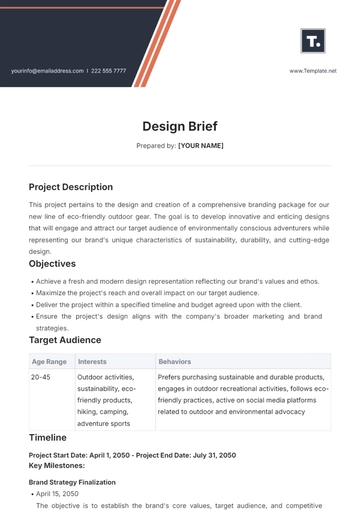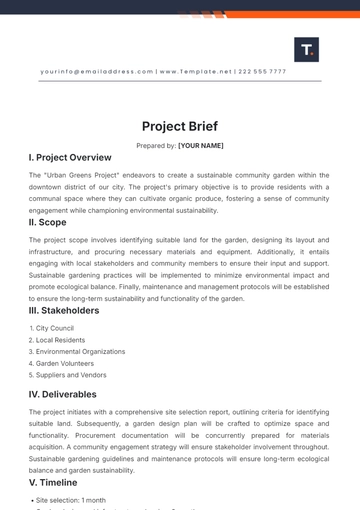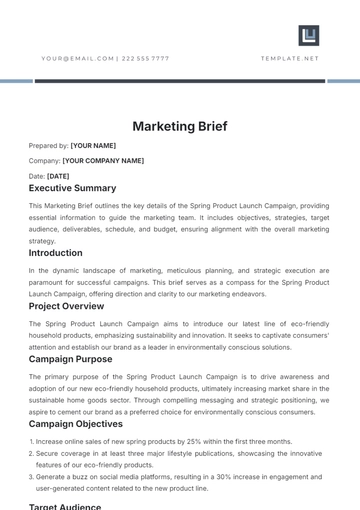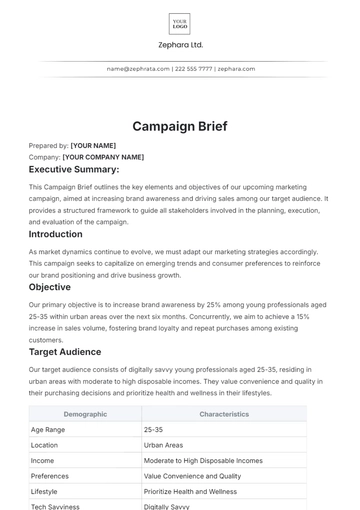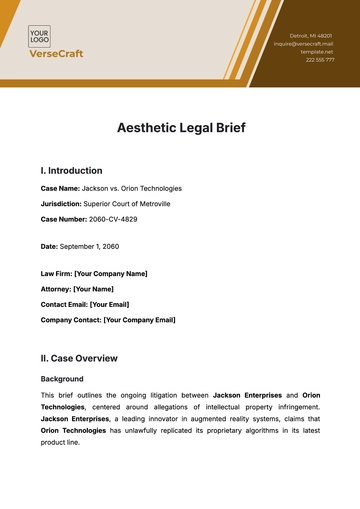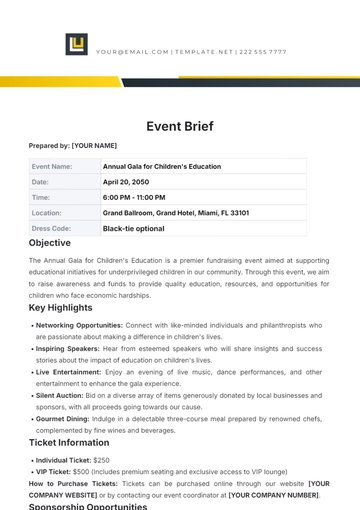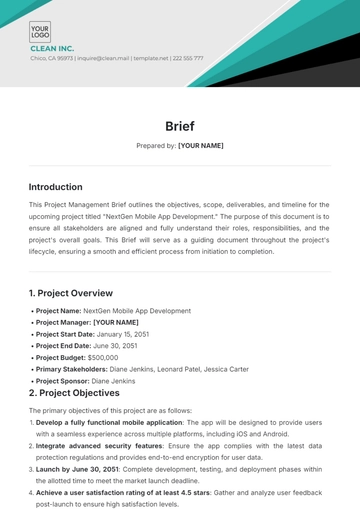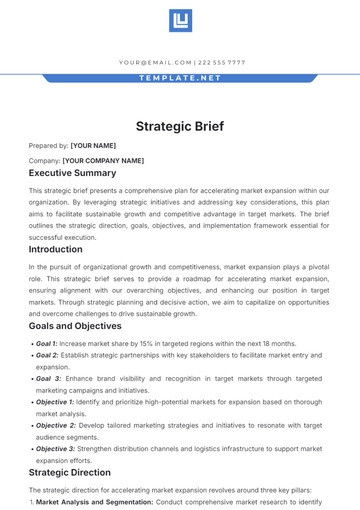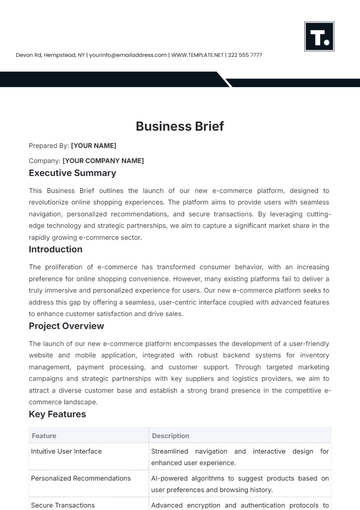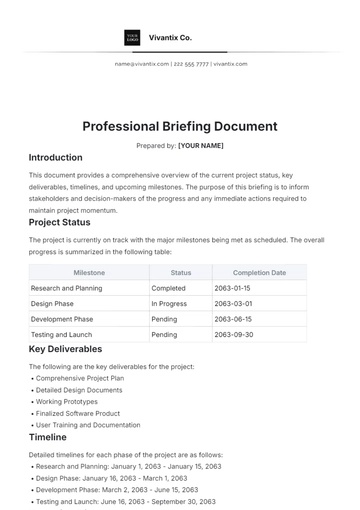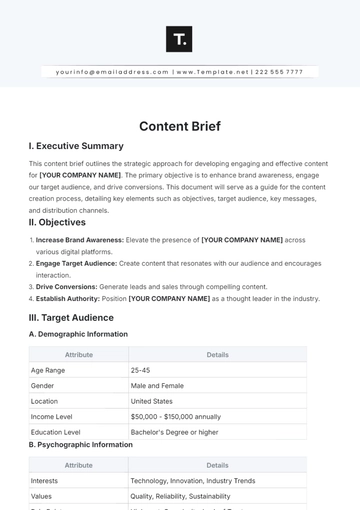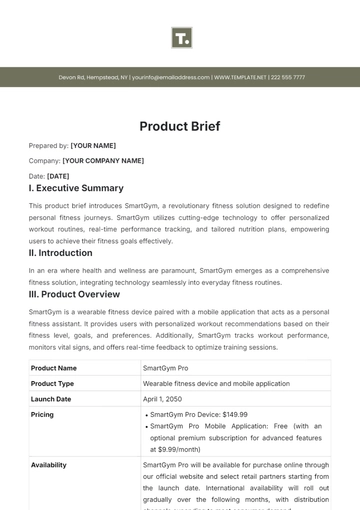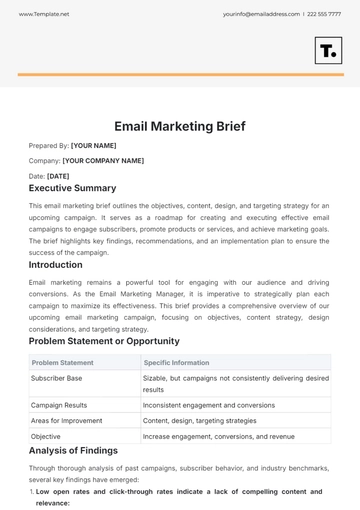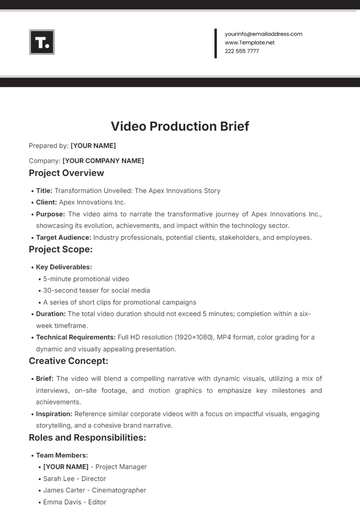Free Student Health and Wellness Brief
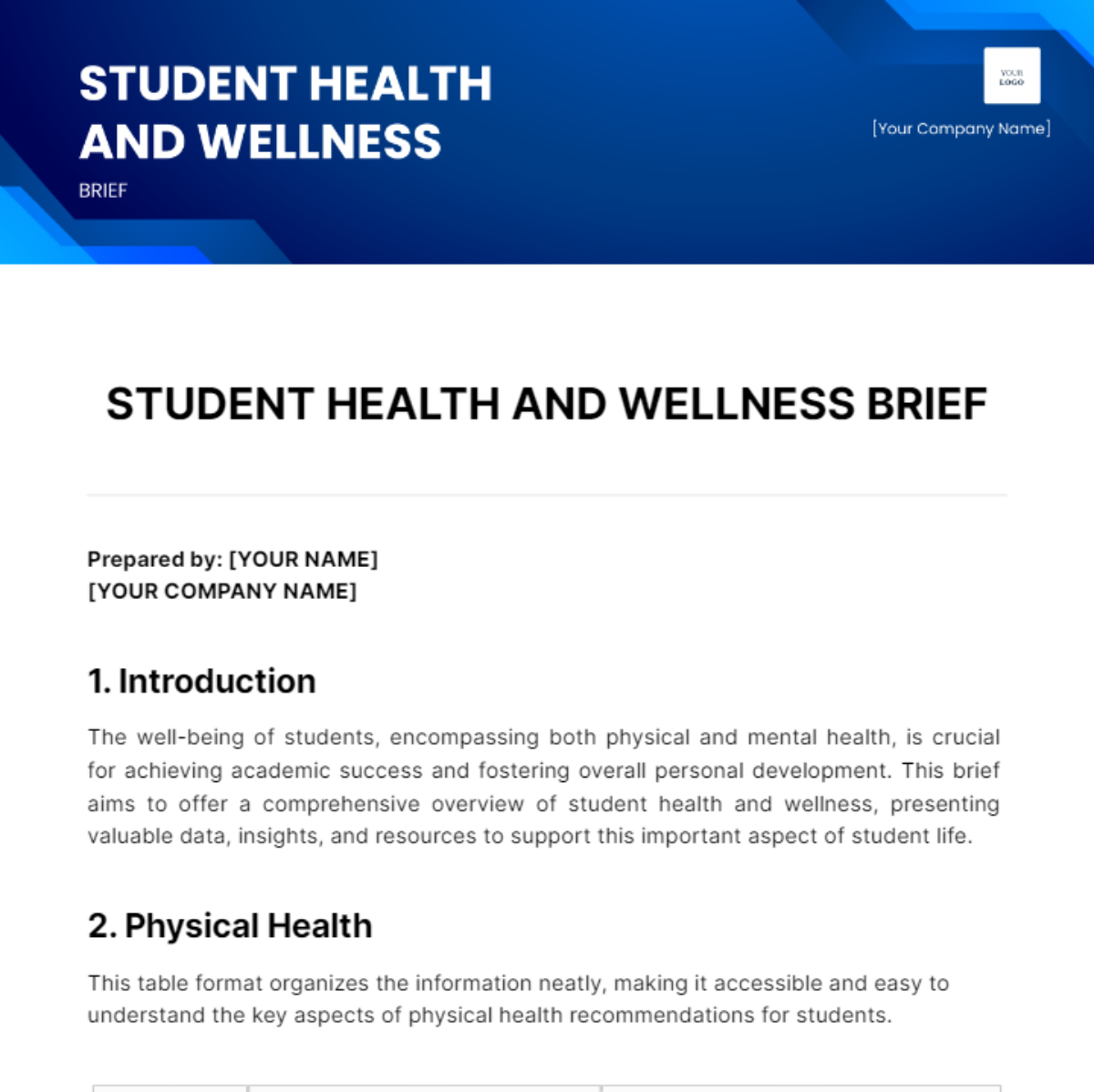
Prepared by: [YOUR NAME]
[YOUR COMPANY NAME]
1. Introduction
The well-being of students, encompassing both physical and mental health, is crucial for achieving academic success and fostering overall personal development. This brief aims to offer a comprehensive overview of student health and wellness, presenting valuable data, insights, and resources to support this important aspect of student life.
2. Physical Health
This table format organizes the information neatly, making it accessible and easy to understand the key aspects of physical health recommendations for students.
Health Component | Description | Recommendation |
|---|---|---|
Body Mass Index (BMI) | A weight-to-height ratio is calculated by dividing one's weight in kilograms by the square of one's height in meters. | Maintaining a healthy BMI between 18.5 and 24.9. |
Physical Activity | Any bodily movement produced by skeletal muscles; includes exercise and activities undertaken as part of daily life. | Minimum 150 minutes of moderate aerobic activity or 75 minutes of vigorous activity per week. |
Sleep | The period of natural rest observed in mammals, including humans, is essential for health and well-being. | Aim for 7-9 hours of good quality sleep per night. |
Mental Health | A state of well-being in which an individual realizes their abilities, can cope with normal stresses of life, work productively, and can make contributions to their community. | Regularly practice stress-reduction techniques such as mindfulness or meditation. Seek professional help if feeling overwhelmed or depressed. |
3. Mental Health
Addressing the mental health aspect of student wellness involves recognizing the significance of psychological, emotional, and social well-being. These facets play a pivotal role in shaping students' thoughts, emotions, and behaviors, directly impacting their learning, relationships, and personal growth. An overview of the prevalence rates for common mental health conditions among students underscores the urgency of this issue.
Mental Health Condition | Estimated Prevalence (%) |
|---|---|
Anxiety Disorders | 25% |
Depression | 20% |
Other Mental Health Conditions | 30% |
4. Nutrition
Nutrition significantly influences students' health and well-being. It involves the intake of a balanced, varied diet that provides all the necessary nutrients.
Nutrient | Recommended Intake |
|---|---|
Proteins | 0.8g/kg of body weight |
Carbohydrates | 45-65% of total daily calories |
Fats | 20-35% of total daily calories |
Fiber | Women: 25g / Men: 38g per day |
5. Wellness Resources
These resources play a crucial role in addressing the comprehensive health and wellness needs of students, fostering a supportive and health-conscious community within educational institutions.
Wellness Resources Available to Students:
Counseling Services: These provide free and confidential mental health support through individual counseling, group therapy, and crisis intervention, aiding students in managing emotional, psychological, and social challenges.
Fitness Centers: Equipped to facilitate regular physical exercise, fitness centers come with exercise machines, and free weights, and often offer group fitness classes, encouraging a culture of physical activity and health.
Nutritional Advice: Personalized dietary guidance from dietitians or nutrition counselors can help students meet their health and wellness goals, emphasizing the importance of balanced eating habits and nutritional education.
Wellness Workshops: Offering workshops and seminars on topics such as stress management, sleep hygiene, and mindfulness, these sessions provide practical skills for enhancing overall well-being.
Peer Support Groups: A supportive space facilitated by trained peers or professionals, allowing students to share experiences and find support among others facing similar life challenges.
- 100% Customizable, free editor
- Access 1 Million+ Templates, photo’s & graphics
- Download or share as a template
- Click and replace photos, graphics, text, backgrounds
- Resize, crop, AI write & more
- Access advanced editor
Template.net's Student Health and Wellness Brief is a pivotal resource for fostering a supportive educational environment. Fully editable and customizable, this template assists schools in developing comprehensive health programs that cater to the physical and mental well-being of students. Easily adapted via our AI Editor Tool, it's a guide to creating a healthier, more inclusive educational community.
